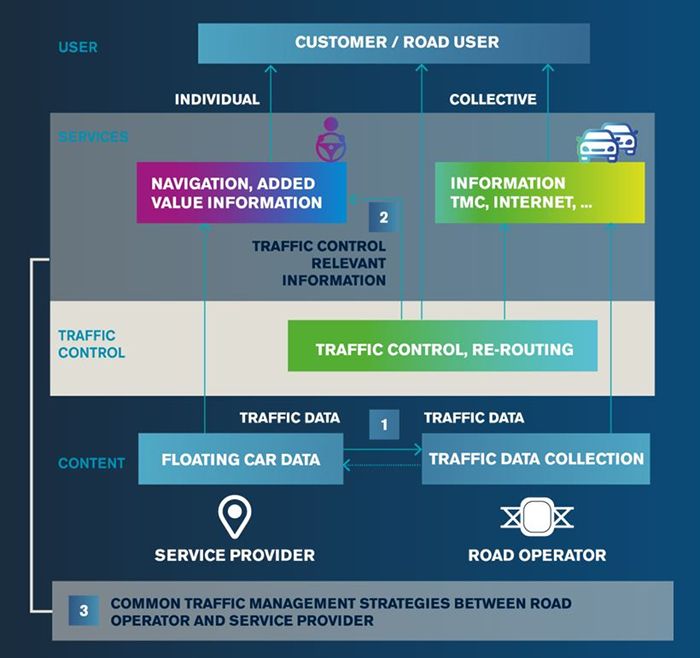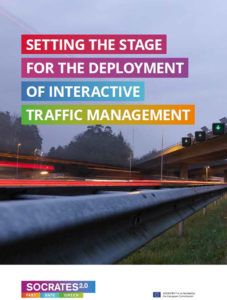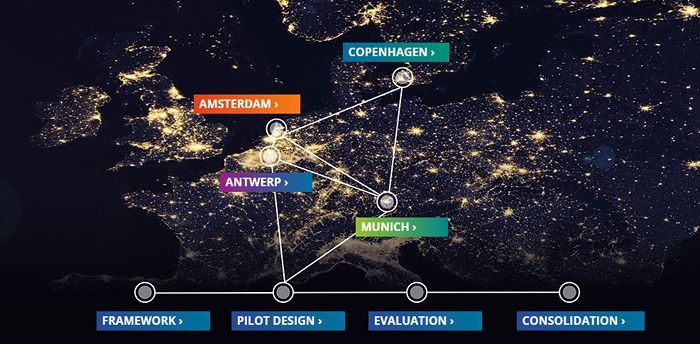The pan-European SOCRATES2.0 project has implemented a new ‘Intermediary’ role that will be used in its four city pilots that are developing and testing various smart traffic information and navigation services for road users, such as optimized routing advice for major events and road works.
In the EU co-funded SOCRATES2.0 (System of Coordinated Roadside and Automotive Services for Traffic Efficiency and Safety) project, 11 public and private organizations have been challenged to try out different ways of working together to provide smarter traffic information and navigation services.
 One-year project trials are expected to start in mid-2019, with at least 9,000 users across the pilot cities of Amsterdam (Netherlands), Antwerp (Belgium), Copenhagen (Denmark) and Munich (Germany).
One-year project trials are expected to start in mid-2019, with at least 9,000 users across the pilot cities of Amsterdam (Netherlands), Antwerp (Belgium), Copenhagen (Denmark) and Munich (Germany).
 The challenge is not only the technical realization of the services, but also the cooperation between the partners involved. Six cooperation models have been developed, and has now implemented the so-called ‘Intermediary’ as a completely new function.
The challenge is not only the technical realization of the services, but also the cooperation between the partners involved. Six cooperation models have been developed, and has now implemented the so-called ‘Intermediary’ as a completely new function.
They have already developed a theoretical ‘Framework for public-private cooperation in traffic management’ that covers the tactical level of cooperation by specifying the framework for the four SOCRATES2.0 pilots.
The framework describes various cooperation models, from simple to very complex. The more complex the cooperation, the more intermediary roles need to be implemented.
The Intermediary consists of a maximum of four clusters of tasks:
- The Strategy Table, which provides the frameworks and preconditions and the ‘toolbox’ to be used for interactive traffic management in the form of a network vision, associated KPIs and traffic management and information services to be applied. The table is provided as a consultation structure, where the actual staffing consists of representatives of public and private partners;
- The Network Monitor, which develops the best picture of the current traffic situation and a short-term traffic forecast on the basis of all available data that has been collected, tested for quality, fused and completed. The best picture of the current and expected traffic situation is used to determine the set of measures proposed by the network manager to road authorities and service providers;
- The network manager, which will determine the most suitable services at that time and to make service requests for this to both the traffic centers and the service providers, with input from the network manager and according to the agreements made in the strategy table;
- The assessor, which monitors whether the service requests have actually been converted into real-world deployment of the requested services by the parties and assesses the impact of these measures. In case of cooperation based on an impact-driven earnings model, the assessor also determines the valuation of the impact.

“With the Framework we present a coordinated and structured approach, which should lead to a successful public-private partnership in the implementation of interactive traffic management,” explained SOCRATES2.0 project leader Tiffany Vlemmings.
“Not only in the SOCRATES2.0 pilots, but as a basis for TM2.0, the next step in traffic management. In the four different SOCRATES2.0 pilots, experiments are being set-up with different cooperation models and intermediary roles, in order to gain as much experience as possible and learn from the effects of different options.”






